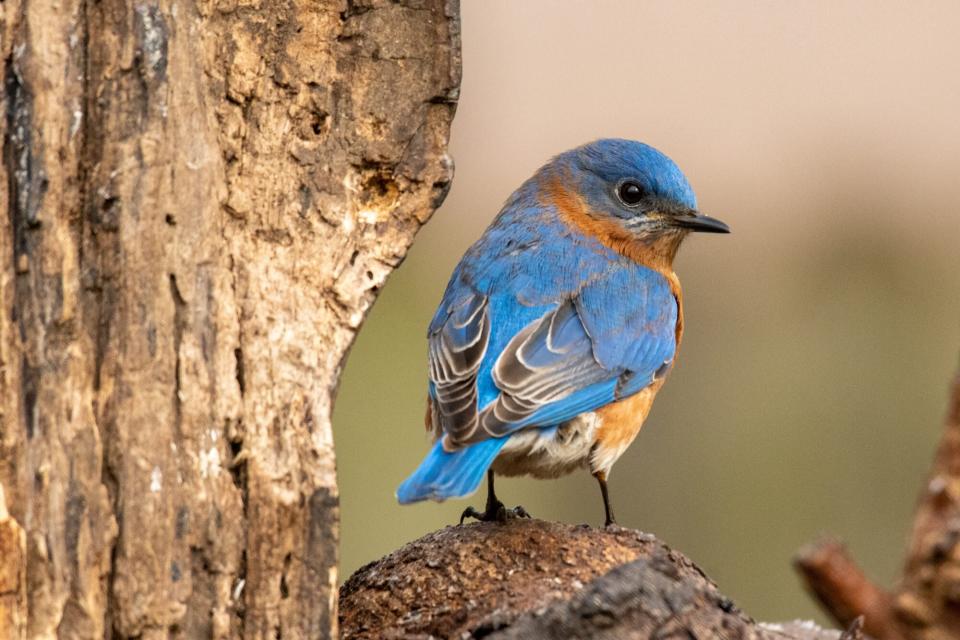How to Attract Bluebirds to Your Yard
If you enjoy relaxing in your backyard, binoculars in hand and watching for birds, you may have already seen many of the most common species in the United States including robins, goldfinches, and cardinals. But others, such as bluebirds, may need an incentive to drop in.
Bluebirds like to nest in tree cavities, but unfortunately, there are few available. Another favorite nesting spot—fence posts made of wood—have been replaced with posts made of treated wood, plastic, or metal. If they're looking for a spot to nest and you provide a homemade version of a nest, they might very well be attracted to it. Here's what you need to know about hosting all of these fine-feathered flyers.
Related: The Best Colors to Attract Birds to Your Backyard (and One Color to Avoid)
Create nest boxes.
This DIY project uses only a few materials, mainly lumber and nails and requires some basic tools. For the full step-by-step directions, go to the National Audubon Society. Bluebirds tend to prefer open spaces, including when they nest, says John Rowden, senior director of bird-friendly communities at Audubon. "If you have a yard with plenty of open space, a bluebird nest box might be appropriate," he says. "Boxes should be placed away from buildings and dense wood. Small clumps of vegetation in the area are okay because they will give the birds places to perch and forage for insects to feed their chicks." Space the boxes about 100 yards apart and out of the line of sight. Rowden says that bluebirds may start looking at nest sites well before breeding, so having the nest boxes set up before the birds might start breeding in your area is recommended.

no107 / Getty Images
Serve them their favorite foods.
When bluebirds get hungry, they consume spiders, caterpillars, worms, and other bugs and insects. But don't try to fill the boxes with these bird snacks. Instead, "having an adequate food supply nearby for the birds to eat and feed their chicks is critical," says Rowden. "Having lots of native plants in your yard or close to it will help provide places for the invertebrate foods that bluebirds love and need to raise healthy chicks." And definitely avoid the use of pesticides if you want to support bluebirds and other wildlife.
Keep other birds away.
It would be nice if only bluebirds were attracted to your nest boxes but other species may try to make them their home, too. Nonetheless, be careful of trying to send these birds an eviction notice. "It's illegal to discourage or prevent native cavity nesting birds [such as woodpeckers and tree swallows] from using a nest box," says Bernie Daniel, president of the North American Bluebird Society, "regardless of why the owner put it up." But other birds who may favor your nest boxes are not exempt, such as house sparrows and European starlings, which are classified as non-natives and pest species. "Check the boxes during the breeding season to make sure things are going okay," says Rowden. "Avoid disturbing the birds but if you see the parents leave to forage that may give you an opportunity to check the boxes." Check for unhatched eggs or dead chicks, which should be removed since they may attract pests and predators.
Clean the nesting sites properly.
Just as you would clean the guest room after a loved one's overnight visit, so should you clean out the nest, but your timing has to be right. "As soon as the last nestling fledges—they never go back to the box—clean it out to be ready for the next occupant," advises Daniel.

